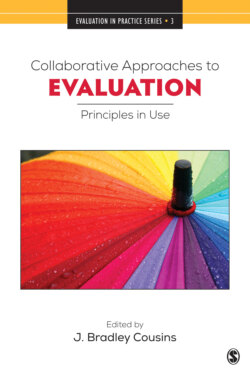Читать книгу Collaborative Approaches to Evaluation - Группа авторов - Страница 30
Translating and Applying in Cross-cultural Contexts
ОглавлениеMany international events have underscored the rapidly growing global interest in evaluation. One such series of events sponsored by EvalPartners was held in 2015 The International Year of Evaluation,9 intended to raise awareness and foster organizational and individual capacity building on a global scale. Much of the work of international development evaluation, as we have observed above, has been heavily weighted toward the interests and needs of bi- and multilateral donor agencies as well as public sector governance institutions. Yet, there is growing interest in the evaluation field building (e.g., Hay, 2010), which implicates the engagement of a much wider range of stakeholder interests in evaluation. We are inclined to think that the CAE principles could help to move this field building agenda. Required would be the official translation of the CAE principles into different languages of interest and applying them retrospectively or prospectively to evaluation projects at the local level. As we discuss below, we have already translated the principles and support documents into Spanish and French. Translation and application into other languages and contexts is most certainly possible and desirable. A caveat, however, is that the CAE principles reflect a western set of underlying assumptions and ways of thinking; translation into other languages is one thing, it would be quite another to actually apply the process in quite different cultural circumstances.
9 www.evalpartners.org/evalyear/international-year-of-evaluation-2015
In western culture, it seems we often equate development contexts with international development, but of course, many of the considerations and principles we have in mind apply to indigenous populations in our own jurisdictions. Such contexts provide yet another cross-cultural opportunity to work with and apply the principles. Regardless, whether international or local/indigenous, applications are not likely to be straightforward given variance and differences in cultural norms. It will be of high interest to see, for example, the extent to which the principles as we have laid them out integrate with indigenous and other ways of knowing.
